In 1863, President Abraham Lincoln proclaimed Thanksgiving a national holiday.
Since then, many traditions surrounding the holiday have developed: We eat turkey and pumpkin pie, watch the Macy’s Thanksgiving Day Parade and root for our favorite football team.
But along the way, other less standard traditions have cropped up. Here are a few of them.
The Turkey Toss
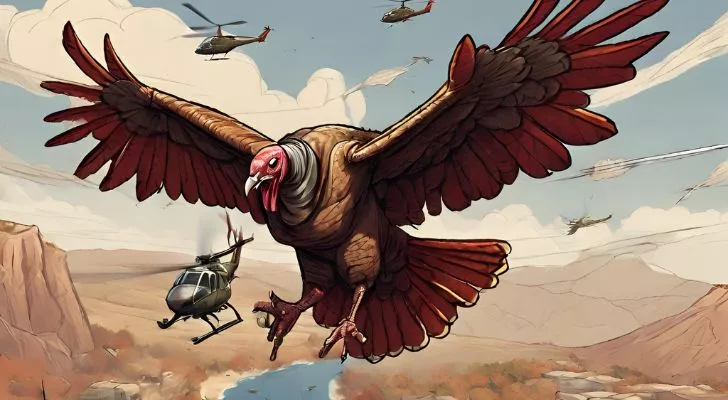
The 1970s-era TV sitcom WKRP in Cincinnati was about a zany crew running a radio station in Cincinnati, Ohio. One episode went down in Thanksgiving history. Entitled “Turkeys Away,” the plot entails a promotion involving dropping live turkeys from a hovering helicopter.
A radio station reporter gives a horrified play-by-play of the off-camera event, mimicking the Hindenburg disaster: “The turkeys are hitting the ground like bags of wet cement! Oh, the humanity!”
Later, a dazed manager, covered in feathers, staggers back to the station following the calamity and utters the immortal line: “I swear, as God as my witness, I thought turkeys could fly!” This became the most memorable quote from the series, morphing into an American meme.
This memorable episode of a largely forgotten sitcom lives on in modern traditions. Assorted television stations re-run the show on Thanksgiving weekend as tribute.
Additionally, various organizations host their own modified “Turkey Toss” before Thanksgiving. For instance, the Hiller Aviation Museum in San Carlos, California, drops 300 turkeys to a waiting crowd below. No, not real turkeys, but soft, squeezable toy versions instead
Throwing Turkeys

Various organizations sponsor events involving hurling turkeys. For instance, take the turkey throw in Boston, Massachusetts.
Each high school in the Boston area chooses a team of two from their football team: the best passer and receiver. The teams, along with supporters, cheerleaders, marching bands, TV cameras, local celebrities, sports heroes, and referees gather for the event.
Each passer must hurl the frozen turkey backward over his head in the general direction of where the receiver is.
The receiver must catch this frozen turkey without letting it hit the ground. If the bird touches the ground, that team is eliminated. Rounds continue with ever-increasing distances, with radio DJs providing a play-by-play.
Consider what the folks used to do in Bloomington, Indiana, for a unique twist on turkey hurling. It started out as an average sort of turkey-throwing competition beginning in 2001.
However, in 2005, event organizer Doug Ballard dreamed up an even better turkey-tossing method involving fire: “If you’re going to throw a turkey, why not cook it while you’re throwing it?”
The bird was dressed in an infant’s onesie and soaked in lighter fluid. Each flaming turkey was attached to a chain. Contestants twirled the fiery turkey in a circle above their heads before letting it go in the hammer throw style.
Alas, the event lasted only two years before it came to a halt, presumably due to liability issues. The winning throw in 2006 was 185 feet 6 inches (56.54m). The world record for the hammer throw is 284 feet 6 inches (86.74 m).
Turkey Bowling
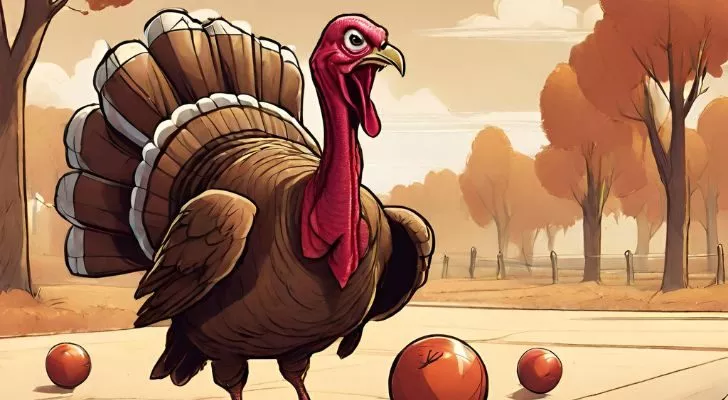
In 1988, Derrick Johnson worked nights as a stocker at Lucky’s Supermarket in Newport Beach, California.
He was struck by how easily the frozen turkeys slid across the countertops and subsequently noted that they also slid nicely across the linoleum floor. Setting up several soda bottles as bowling pins, he invented a new sport: turkey bowling.
Lucky’s never sponsored a Frozen Turkey Bowling tournament. Regardless, word got out about the new sport, starting with a tongue-in-cheek article in the sports column of a local newspaper on a slow news day.
It culminated with appearances for Johnson on Good Morning America and The Arsenio Hall Show. The management at Lucky’s wasn’t happy about the publicity and fired Johnson.
Butterball was similarly unhappy with the publicity since Johnson routinely mentioned that Butterball turkeys were the best for bowling because their built-in plastic carrying handle made it easy to fling. They issued a cease-and-desist.
Though Derrick Johnson faded into obscurity, Frozen Turkey Bowling lives on. Grocery stores sponsor tournaments in the aisles of their shops; schools schedule them as a morale-booster for students.
Social programs host them on frozen lakes as a fundraiser; hockey teams perform them in the rink as entertainment; families in warm climates do it on a wet Slip-‘n-Slide on the lawn.
Derrick Johnson would be happy to know his sport lives on in American tradition today. Butterball, not so much.
Deep-Fried Turkey
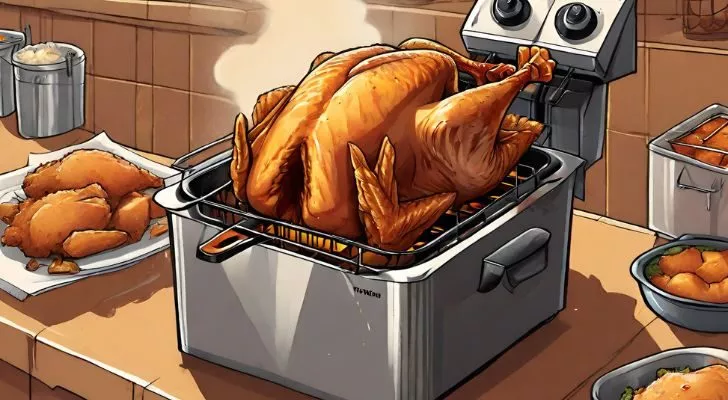
Having turkey for Thanksgiving dinner has long been the status quo. The customary method of cooking it was to bake it. All that changed when a new fad swept the country: deep-fried turkey, yielding a bird that’s purportedly moister on the inside and crispier on the outside.
It all started with the invention of propane-powered cookers in the 1970s. The deep, heavy-duty aluminum pots stood on a stand over the gas flame. Folks in Louisiana adopted this method for cooking a favorite Cajun dish of boiled crawfish.
That led to deep-fried fish. Then it was modified to poultry submersed in lard, then turkeys cooked in peanut oil. There is no doubt that deep-fried turkey originated in Cajun country; the only question is who invented it first.
Regardless of the details of its birth, once the idea first saw the light, it spread quickly. Chef Jim Chehardy of the Landmark Hotel in the French Quarter started serving deep-fried turkey in 1982.
The first newspaper article about it appeared that year. Celebrity chef Justin Wilson deep-fried a whole turkey on his PBS show, Louisiana Cookin’, in 1986, which lit the fire.
When the Newspaper Food Editors and Writers Association met in New Orleans for their annual meeting, they were treated to a demo. Then followed celebrity endorsements: Martha Stewart, Paula Deen, Alton Brown, Emeril Lagasse, etc.
Even the National Turkey Federation endorsed the method.
Today, there are more cooking-related housefires on Thanksgiving than on any other day of the year. Fully one-third are started on a deck, patio, porch, or garage due to deep fryer mishaps.
Firefighters respond to about a thousand deep fryer fires yearly, resulting in five deaths, 30 injuries, and the loss of 900 homes.
The one organization that failed to endorse deep-fried turkey? The National Fire Protection Association.
Deep-Fried Turkey Testicles

Maybe you don’t want to eat the entire deep-fried turkey. Perhaps you’d be satisfied with just a little bit of deep-fried turkey bits. In that case, turkey testicles may be precisely what you’re looking for.
Timothy O’Tooles, a pub in Chicago, Illinois, historically held turkey testicle-eating contests the day before Thanksgiving. The person who downed the most testicles in the allotted time won an entire turkey (minus the testicles) to take home.
Those not interested in competing, who still wanted to taste those fried testicles, could purchase a “bucket-of-balls” for only $11.
Alas, Timothy O’Tooles eventually ceased hosting this contest due to declining demand. Maybe testicles just aren’t what they used to be.
Turducken
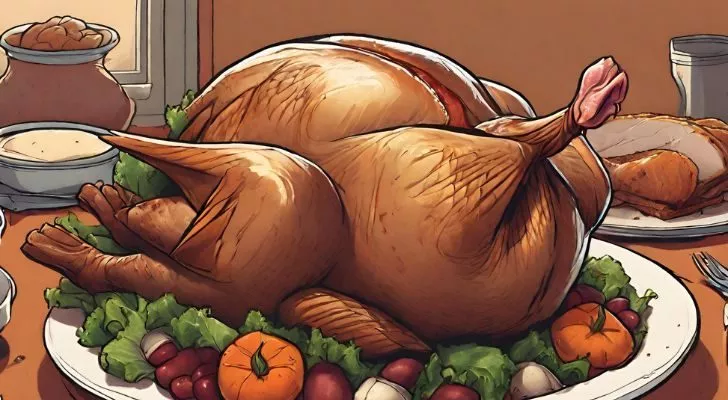
Junior and Sammy Hebert owned a butcher shop in Maurice, Louisiana. One day in 1984, a local farmer brought in a chicken, a duck, and a turkey.
He asked the Heberts to stuff one bird inside the other for him. They did so, cramming stuffing in between. The butcher shop has been selling them by the thousands at holiday time ever since.
Meanwhile, celebrity chef Paul Prudhomme, famous for his Cajun and Creole recipes, claimed he was first served the dish in the 1970s while staying at a hunting lodge in Wyoming.
What is known for sure is that Prudhomme refined the recipe, trademarked the name “turducken,” and served it at his New Orleans restaurant. He also published the recipe in a cookbook and promoted it in numerous celebrity appearances.
Turducken rocketed to nationwide popularity because of endorsements by noted sportscaster John Madden. In 1997, Madden was given a turducken by relatives of the Hebert family. He ate it on air, with his fingers, during the Thanksgiving Bowl football game at the Superdome in New Orleans.
The word “turducken” was officially added to the dictionary in 2014, and it remains a holiday standard today.
Pie-Eating Contests
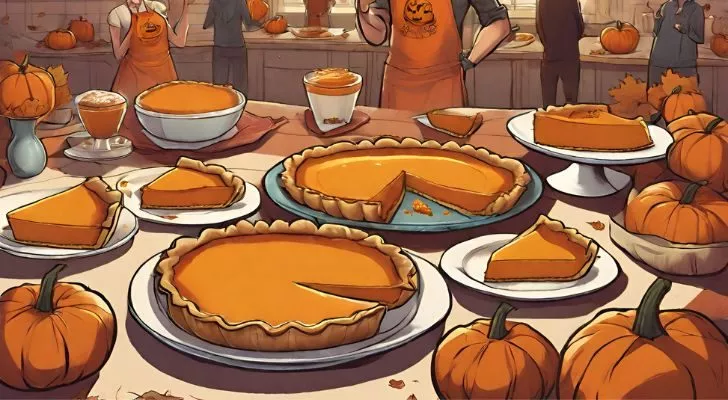
Often hosted by fraternities, radio stations, Rotary Clubs, and schools, the rules generally require contestants to have their hands tied behind their backs while they eat the pie face-first.
Some rules dictate that the first to eat one entire pie is the winner; others give competitors a set time to down as much as possible, while some strive to see who can eat the most.
In this last category, world-famous competitive eater Joey Chestnut beats all. In Fairfax, Ohio, Frisch’s Bigboy hosted a pumpkin-pie-eating contest the day before Thanksgiving in 2022. Joey Chestnut intended to eat 24 full-size slices of pie. Alas, he only got through 14.
Pumpkin Smashing

Everybody sets pumpkins out for Halloween. By Thanksgiving, they’re a little worse for the wear. Some organizations put pumpkins to good use rather than toss them in the compost heap.
A good example is the Santa Barbara Zoo in California. On Thanksgiving Day, the zoo remains open and invites visitors to watch the “Pumpkin Smash,” where various zoo animals are treated to pumpkins as an enrichment activity.
Elephants can stomp the whole pumpkins into bite-size pieces, but other animals need the pumpkins smashed into bits. Lions are treated to meat-filled pumpkins, otters receive pumpkins full of frozen fish, and gorillas get pumpkins stuffed with fruit.
The program, a big hit with visitors, provides stimulation for the animals.
Breaking the Wishbone
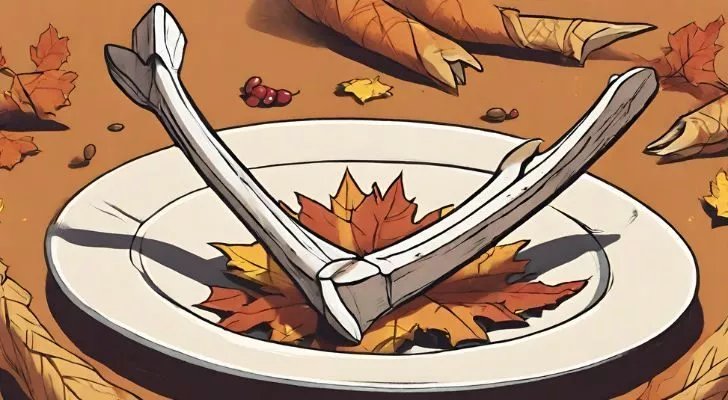
Nobody thinks twice about breaking a wishbone; what could be bizarre about that? It only becomes weird when you pause to consider why we do it.
About 2,400 years ago, the Etruscan civilization thrived in a region of Italy we now call Tuscany. The Etruscans believed chickens, both living and otherwise, had supernatural powers.
A live chicken, placed in a pen where letters of the Etruscan alphabet were drawn in the dirt, would peck at scattered grain, spelling out words to answer questions.
On the other hand, a dead chicken yielded a forked bone, now called the wishbone, which would grant wishes when someone stroked it while visualizing their desire.
When the Romans took over the region, they adopted the tradition. However, since there were more citizens needing wishes than there were chickens available, the Romans began breaking the wishbone in half so that two people could have wishes granted instead of one.
As the Roman Empire spread, so did this superstitious belief.
When the pilgrims left England for the new world, they brought the habit with them. Since wild turkeys were common, breaking the wishbone after devouring a turkey became another bizarre Thanksgiving tradition.
Thanksgiving is a favorite holiday, celebrated by millions of Americans, and steeped in tradition.
While we all continue to enjoy the tried-and-true traditions, there isn’t any harm in livening things up by adding brand-new traditions to the mix, whether they be weird, odd, unusual, or just plain fun.
This Thanksgiving, why not add some of these crazy traditions into the mix?


















